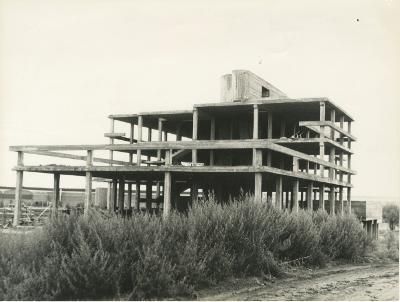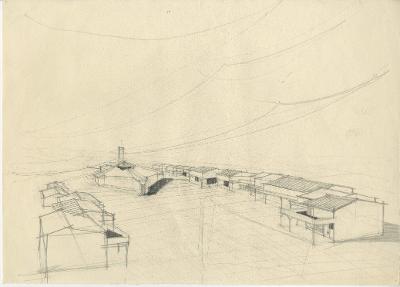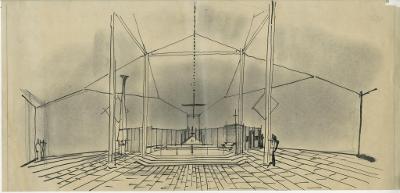Hotel "Dalmine", Campana (Argentina)










Dalmine Safta
Residence Techint was designed as part of a civic centre for the industrial factories in Campana, Argentina; it is the only building of a much more complex urban plan that was actually constructed.
Magistretti was commissioned the project by the Dalmine Safta company (a partnership between the Dalmine and Technit companies); it was to be built in an area between the houses for the company directors and the workers' neighbourhood known as Barrio Dalmine (already built). The civic centre covered the entire forty-three hectare lot, half of which was to be left as a green area. Apart from the long stay hotel, the lot was to be occupied by an auditorium, offices, shops, and a parish complex situated around the hub of the design: the parvis and the cinema plaza. The buildings were to be positioned on several terraces, differing in height above sea level. Magistretti liked this kind of settlement model and reproposed it not only for the Marina Grande residential complex in Arenzano (1960-1965), but also for smaller commissions, for example Casa Bassetti at Azzate (1960-1962).
The residence has four, above-ground floors; the laundry room, ironing room, kitchen, and operational systems room are located on the ground floor together with its public functions (a coffee house and restaurant accessed through another entrance rather than the hotel entrance). The lounges for the guests are on the second floor; they open onto a portico running alongside what was to be the road to the civic centre. This floor also hosts the concierge's office, the management offices, and staff quarters. The bedrooms (with sixty-four beds) are on the top two floors; the number of beds can be increased to 100 without having to downsize the service areas. The small entrance to every room leads to the bathroom (with a bath) and to the main room, divided into three separate areas: an alcove for the bed (which can be screened using sliding doors), a living room, and a desk area. Every room has a private loggia. The rooms at the end of the building are bigger and were designed as suites.
The roof garden over the restaurant, with a bigger surface area above the upper levels, can be accessed using an external staircase; the kitchen has a roof terrace connected to the laundry and ironing rooms.
The bush-hammered stone bases, warm grey plastered walls, and dark wooden lattice parapets initially envisaged for the finishings were replaced during the design process to underscore the spirit of the genius loci so dear to the Milanese architectural school of pre-existing artefacts headed by Ernesto Nathan Rogers, Magistretti's teacher during his voluntary exile in 1943 at the Champ Universitaire Italien (University of Lausanne). The designer wrote: "Climate conditions inspired our decision to propose fronts with cornices, stringcourses, parapets, and projecting gutters that create shady rest areas; apart from creating a dynamic chiaroscuro pattern, they protect all the exposed elements on the façades". Worksite photographs document this evolution; they show the reinforced concrete skeleton, gradually covered by a brick envelope, and the independent entrances positioned in horizontal sequences stretching to the shorter fronts thanks to elegant corner solutions. These choices herald Magistretti's choices for the building in Piazza San Marco in Milan (1969-1971).
After a long period of neglect (during which Magistretti drafted a restructuring plan dated 2005) the complex was reopened in 2008 after it was restored and turned into a residential building used by Tenaris University.
V. Magistretti, Relazione di progetto, Albergo "Dalmine", Campana (Argentina), 1959-1963
C. Lussana, M. Tonolini, Dalmine: dall'impresa alla città, in Quaderni della Fondazione Dalmine"+, n. 3, 2003, pp. 65-128
El centro industrial Techint de Campana, 1964







